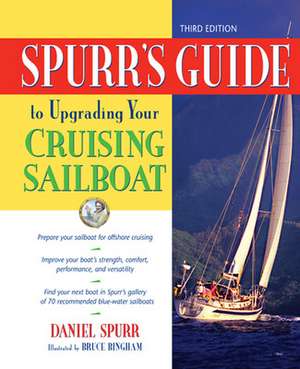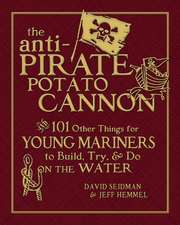Spurr's Guide to Upgrading Your Cruising Sailboat
Autor Daniel Spurren Limba Engleză Hardback – 16 mai 2006
Just about every sailboat—used and new—can make a good cruiser, but only if the hull-deck structure, rig, and systems meet certain standards. Spurr’s Guide to Upgrading Your Cruising Sailboat tells you what those standards are, and gives you all the help you need to refurbish and upgrade every structure, surface, fitting, and system on your boat—stem to stern, project by project.
This all-in-one guide leads you step by step to a seaworthy, crew-friendly boat with top-notch cruising performance. Not only will you learn what to look for when you buy a new or used boat, you'll also learn how to reinforce your boat’s hull and structural components, redesign and replace rigging, upgrade electrical systems, and much more. Special features include:
- A detailed survey of 70 used and new fiberglass sailboats best suited to offshore sailing
- Gear and equipment recommendations by brand name
- Construction details and other essential features of a strong, safe cruising boat
- How to make critical repairs to the deck, hull, bulkheads, blisters, and portlights
Preț: 279.99 lei
Preț vechi: 301.14 lei
-7% Nou
Puncte Express: 420
Preț estimativ în valută:
53.58€ • 58.18$ • 45.01£
53.58€ • 58.18$ • 45.01£
Carte tipărită la comandă
Livrare economică 24-30 aprilie
Preluare comenzi: 021 569.72.76
Specificații
ISBN-13: 9780071455367
ISBN-10: 0071455361
Pagini: 408
Dimensiuni: 216 x 277 x 23 mm
Greutate: 1.32 kg
Ediția:3
Editura: McGraw Hill Education
Colecția International Marine/Ragged Mountain Press
Locul publicării:United States
ISBN-10: 0071455361
Pagini: 408
Dimensiuni: 216 x 277 x 23 mm
Greutate: 1.32 kg
Ediția:3
Editura: McGraw Hill Education
Colecția International Marine/Ragged Mountain Press
Locul publicării:United States








